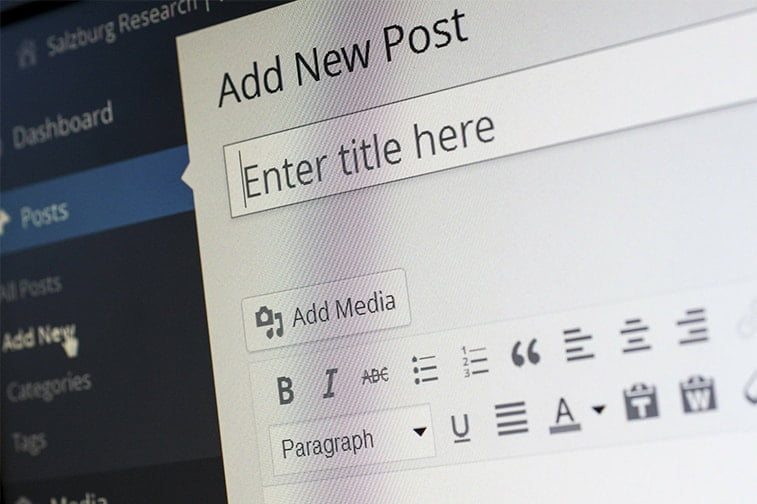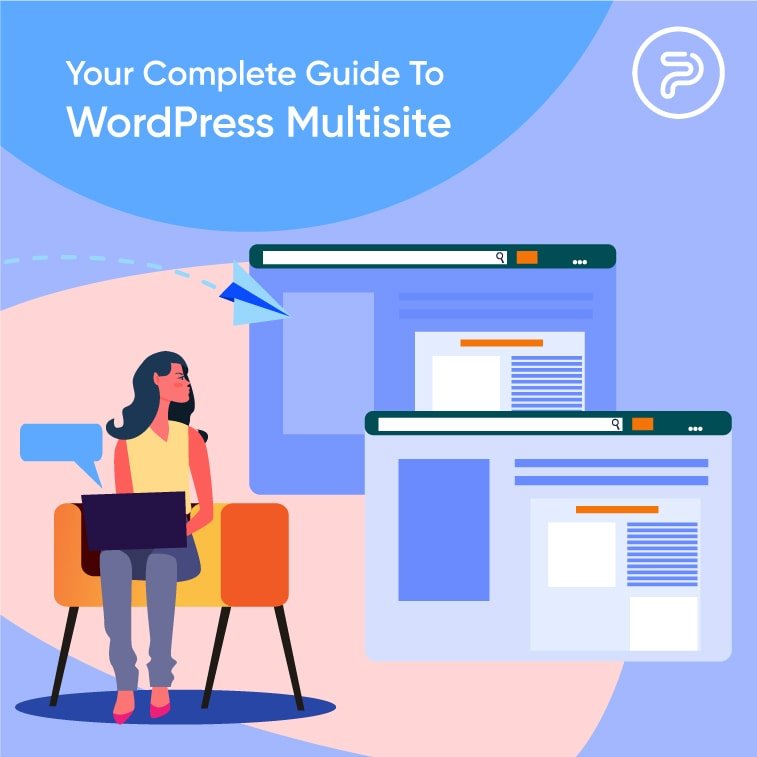If you are among the more seasoned, older site owners, you probably remember how WordPress solutions took the web development world by storm, offering simple merchants, smaller brands, and business a great way of running self-hosted, standalone websites with simple maintenance tasks in an easy way that, for the most part, did not require any coding knowledge from the site owner.
The content management system managed to grow immensely in popularity and as an ecosystem as well, transforming from a simple CMS into a robust builder that will basically handle every type of functionality and role, let that be something simple, like appointments to something more taxing and complex, like eCommerce.
You may also know that WP made one more crucial step, way back in 2010: it introduced the Multisite feature in the source code, which enables you to transform your basic WP installation into a complete hub of website networks with ease.
In this article, we will give you a comprehensive guide to WordPress multisite and try to break down everything you need to know about this feature and how you can use it to your advantage in the digital realm.
Enter Multisite
So, how to use Multisite? How to leverage this feature? What kind of benefits can it hold for a typical WordPress user?
First of all, with Multisite, any WP site owner can create a fully independent site network or invite other others to create their own web apps on the network for commercial, educational, or several other purposes.
The feature began its career as Multisite user as a standalone app, however, it has been an integrated part of the WP core code since version 3.0 hit the shelves.
Truth be told, for most users, especially those who just want one simple website, this feature will be pretty much obsolete, however, for those who want to give managing multiple sites a try without the need to create several separate web hosting arrangements and installations, using Multisite can make perfect sense as it is literally a breeze to run more or less unlimited numbers of standalone WP websites under the same WordPress installation under a single hosting account.
What is WordPress Multisite?
Once you activate the feature, you can create your individual network by creating subdirectories and/or subdomains on your website. You can create as many as you please or you can invite other site owners to register with your web app and let them create their own apps within your network.

In this setting, your site, the original where the Multisite feature was activated, acts as the core and nexus of all the other sites that make up the entire network. This also makes you the administrator for the network and the main site’s webmaster. The first role is also called “Superadmin” by some.
Of course, the individual site owners can also be admins for their subdomain websites, however, they won’t have access to make changes that would affect the entire network that originates from the main site. Only you, the Superadmin can do that.
Who Could Leverage WordPress Multisite?
By now, you kind of have an idea of who can benefit from such a feature and why. Having an entire array of connected sites might not be important for most website users, however, in some cases, it makes a lot of different things a lot easier. For most, adding contributors and linking content from other websites are the only types of networking they will ever need.
However, managing an entire network from a single WordPress installation can be handy for quite a few different implications and purposes. These could be:
- Multiple client site management – This feature can be incredibly handy for companies like design businesses who can ease both their own and their clients’ pain when it comes to managing websites for blogging, launching new features, management, or other related purposes that have to do something with business with the parent company. A good example is Fine Art America, an online marketplace, which offer their clients blog spaces and a portfolio under the main site’s brand.
- Education – It’s also a great feature for education portals, as they can create a single hub site, that hosts a network of different classes or instructors. This way, students can get a consistent and more streamlined experience across the board, and it also makes finding each platform a lot easier as well. As a matter of fact, Multisite can be also incredibly handy for web development and web design, especially for coding and other aspects. You can set up an entire network of different test sites under the umbrella of one main site where you can apply design concepts and laying down the foundation for new approaches.
- Commercial website network management – with Multisite, you can also set up a commercial web network where your users pay a monthly subscription fee to get hosting for their site within your network.
- Running an internal business network – Companies that have multiple contractors or employees who tend to do business independently with clients or customers (think about realty agents or salespeople) can benefit from running Multisite as it allows these professionals to set up a standalone website under the main company’s umbrella.
As we’ve already discussed before, you can host virtually an unlimited number of different websites with the feature, and it has several benefits.
For starters, it can be less expensive and less time consuming than creating a large number of individual hosting accounts and setting up an array of different websites that you will later need to manage entirely on their own.
By activating Multisite, network-related tasks become the responsibility of the main admin and can make a lot of daunting management and maintenance tasks more streamlined.
Getting Started With WordPress Multisite
Activating this feature needs a bit of legwork but it’s nothing you can’t handle on your own. To activate Multisite, you need to insert a line of code from the WP codex into your future main site’s wp_config.php file. This code snippet contains the phrase “WP ALLOW MULTISITE” just above the last line of code within the file.
Once you activate the feature, you will be able to see it on your website’s Admin dashboard under your Tools menu, in Network Setup.
Now, simply just click on the Multisite option and start to customize your new network settings. Here, you can create a new name, administrator, and other settings. You can choose whether your other sites will be subdomains or directories under your main site or not. This decision will affect the URL structure of the new sites along with their URL behavior after you add them to the network.
After you’re finished with your basic settings, your users need to register with your main site to create their own web app on the network, or need to request access from the main admin who can then add their already existing site to the network.
Managing Network Websites
When you are running this feature, the sites on your Multisite hosting don’t have complete autonomy, and some major management functions and decisions only work from the top-down, i.e. from the main installation.
What this basically means is that certain changes, like customizing, adding, or removing themes, plugins, and executing other updates can be only done through the main WP install. After making the changes, they are integrated into the subdomains on the network.
That being said, individual site administrators can’t make any of these network-wide changes, however, they can make a few tweaks to their own sites, like site title customization.
Simply put, the super administrator is the one who’s in charge, meaning that they are responsible for all the site running tasks on the entire network in general, like setting up and managing hosting on the domain of the main site.

The number of sites on that given network and the amount of content you wish to put on them are basically limited by your own resources and hosting storage and bandwidth that are available to the main site. That being said, if you are planning on running a larger network with extensive features, you might need to look into different hosting plans beforehand, to make sure that the expansion/transition goes smoothly.
WordPress Multisite – Is It Worth It?
Multisite will not be necessary for most users and some simply won’t be able to leverage everything it has to offer. However, the fact that it’s available in the source code is a nice touch and makes for an easy transition for those who want to set up an entire network of WP sites.
Pros
- You can conveniently manage all of your sites from the same dashboard
- The centralized control enables you to keep everything streamlined without site admins willingly or unwillingly creating a mess on the network by installing and tweaking themes, plugins, user profiles, and so on.
- All plugins and themes are only stored once saving you both money and space when it comes to hosting.
- Update your WP core, themes, and plugins once for all your sites saving time in the process.
- Install themes and plugins only once for all subsites.
- With the right approach, you can achieve a high level of branding and structure consistency between the branch sites of your business.
- Because all of the network’s sites use the same single SQL database, you can store all data on a single backup and you don’t need to perform backups for every single site.
- Every site can be accessible with one user profile within the network, once granted access.
- You can also allow third-party users to create accounts within the networks along with content, like blogs.
Cons
- Centralized control can also be a pro and a con. Depending on the setting, it might not be okay for specific site admins not to be able to perform updates or tweak themes and plugins.
- Hacker attacks and other security problems can affect the entire network.
- The same can happen in the case of performance problems as well (think downtime, traffic overload, etc.)
- While there are lots of benefits of a shared user base, it can also cause problems down the line in some specific cases.
- Not all WP plugins work with multisite and will just only cause headaches.
- It can be difficult to keep customized plugins and themes to particular websites within the network.
So, to sum it up, Multisite can be a great option for you if you:
- Need several subsites that more or less sport the same or very similar functionality
- If you don’t need separate user audiences, and the fact that you have shared users won’t cause any security problems.
- If site admins are okay with a centralized approach when it comes to site management and not having access to any major features.
- If you are on the verge of scaling your business but need a way to keep site management tasks transparent and streamlined.
Finishing Thoughts
As you can see, Multisite can be a great opportunity for those who want to take their organization and/or brand to the next level without giving op the single-site management-approach they’ve had before starting the network.
On the other hand, if you are looking to venture into a setting, where you basically share the network with several partners, synchronizing different needs, functionality, approaches, and needs might be a problem down the line since the uniform structure might not suit every site admins needs and philosophy.





